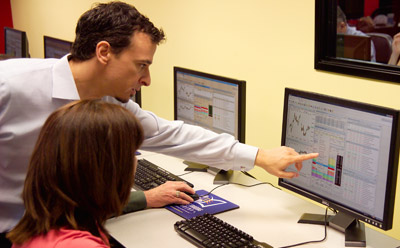“Invest in land, it’s the only thing they’re not making more of” was a 19th century truism. In the 21st century, the truth has changed: Invest in sustainable resources and ecosystems, they’re not making any more of those either.
Start Small
Start on small scale improvements, things like recycling, helping people plant gardens and convincing people and businesses to use less electricity. Talk to new home buyers about reducing construction waste. It’s good for the environment and reduces costs.
Talk About Solutions as Well as Problems
It’s easy to go onto Jeremiahads about the environment. People driving SUVs, a culture of disposable convenience, and “buy now, pay later” as the foundation for environmental policy. With so many things going wrong and so many people willfully blind, the temptation to scold and cajole is great. Don’t. Propose solutions, and make the case for alternatives, like straw bale housing, and community programs to recover scrap lumber from existing projects. Look for ways to solve problems as well as point them out. Too often we spend our energy tearing down the existing models without offering reasonable alternatives. The only way to change society is to create something new to replace it.

Observe, Record and Report
Observing nature–going out to sites and actively looking at the wildlife that’s there, taking counts of species, and photographs of samples–is a part of an environmental studies degree that can be a critical component of being an environmental advocate. In addition to being part of the data collection process, it’s good for the spirit to touch, and smell and be in nature. Consider grounding your philosophical perspectives in scientific numbers and theories to better understand the scope and details of the challenges we face.
Focus on Tangible Benefits
The job isn’t easy. You’re advocating for change, and it’s very easy to advocate for changes that seem abstract, that have benefits that are set in the future. Always put a human element in your advocacy. Talk about the benefits of sustainable agriculture, the benefits of mixed green space in new urban areas for mental health and parks, and focus on the benefits to the near term. This will give people practical and tangible reasons to join the cause themselves.
Make It Personal To Your Audience
Many Americans never see wilderness, or even farmland, up close. 80% of the US population lives in a major metro area. Try to bring the benefits of wilderness space to them; you aren’t trying to persuade the audience with your logic. You want to electrify their souls, so that they’ll vote for people who support your organizations aims. While you’re at it, you also want to talk to local farmers about issues that concern them. Their first-hand connection to the land gives them wonderful insights into habitat management.
Conservation advocacy makes you the speaker for thousands of species in your community that have no voice on city planning councils or corporate boards. However, don’t let that blind you to your listeners–your message has to reach them and persuade. Understand that people need to comprehend the tangible ways that environmental issues impact them in order to see their importance.








